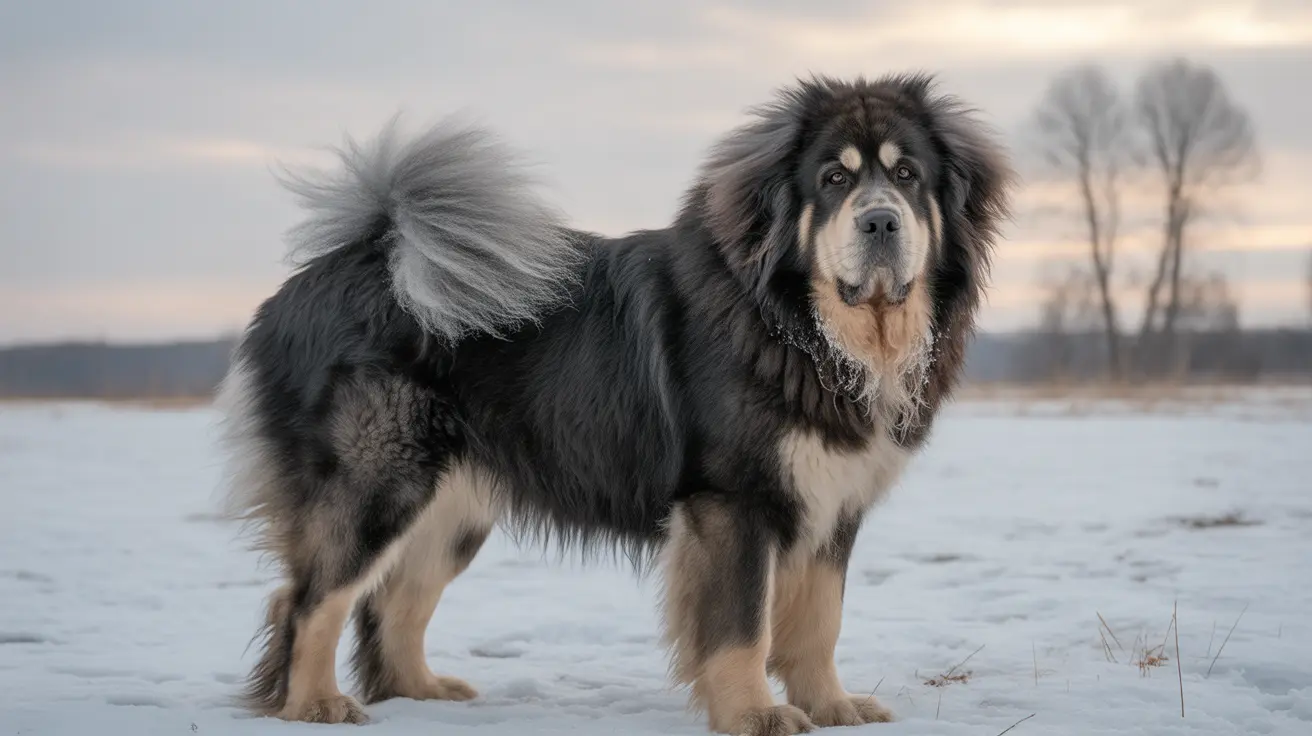Understanding Tibetan Mastiff Coat Types
Tibetan Mastiffs possess a distinctive double coat that served them well in their original homeland of the Himalayan mountains. The outer coat consists of coarse, protective guard hairs that repel moisture and dirt, while the soft, dense undercoat provides crucial insulation against extreme temperatures.
This specialized coat structure means that these dogs don't just shed - they undergo a specific pattern of hair loss that varies throughout the year.
Seasonal Shedding Patterns
During most of the year, Tibetan Mastiffs maintain a moderate level of shedding that's manageable with regular grooming. However, once or twice annually, typically in spring and sometimes fall, they experience what's known as "coat blowing" - an intense period of shedding that lasts 2-4 weeks.
During these seasonal sheds, the thick undercoat releases in large quantities, often coming out in tufts or clumps. This natural process allows the dog to adjust their coat density for the upcoming season.
Essential Grooming Requirements
To manage your Tibetan Mastiff's shedding effectively, establish a consistent grooming routine:
- Weekly brushing during regular periods
- Daily brushing during seasonal shedding
- Regular checks for matting, especially behind ears and around the neck
- Occasional baths (every 4-6 weeks) using appropriate dog shampoo
- Professional grooming sessions during heavy shedding periods if needed
Managing Shedding in Your Home
Living with a Tibetan Mastiff requires some preparation and regular maintenance:
- Invest in a high-quality vacuum designed for pet hair
- Keep lint rollers in multiple locations around your home
- Consider using washable slip covers on furniture
- Establish designated grooming areas outdoors during heavy shedding periods
- Use air purifiers to help manage floating fur and dander
Factors Affecting Shedding Intensity
Several factors can influence how much your Tibetan Mastiff sheds:
- Climate and seasonal changes
- Indoor versus outdoor living
- Diet and nutrition quality
- Overall health status
- Stress levels
- Hormonal changes (especially after spaying/neutering)
Frequently Asked Questions
How much do Tibetan Mastiffs typically shed throughout the year?
Tibetan Mastiffs are moderate shedders most of the year but experience intense shedding periods during seasonal changes. Regular maintenance shedding is manageable with weekly brushing, but seasonal coat blowing requires daily attention.
When do Tibetan Mastiffs experience their heaviest seasonal shedding or "coat blowing"?
The heaviest shedding typically occurs in spring (March-May) as they shed their winter coat. Some may experience a second, lighter shed in fall (September-October) to prepare for winter coat growth.
What grooming techniques and tools are best for managing Tibetan Mastiff shedding?
Use a combination of tools including slicker brushes, undercoat rakes, and wide-toothed combs. Regular brushing sessions should focus on removing loose undercoat while maintaining the protective outer coat. During heavy shedding periods, daily brushing outside is recommended.
Does the shedding of Tibetan Mastiffs affect people with allergies, and how can it be minimized?
Yes, Tibetan Mastiffs are not hypoallergenic and their shedding can significantly affect allergy sufferers. To minimize impact, maintain regular grooming schedules, use air purifiers, keep the dog out of bedrooms, and vacuum frequently with HEPA-filter vacuums.
Can factors like climate, health, or neutering influence the shedding patterns of Tibetan Mastiffs?
Yes, all these factors can affect shedding patterns. Indoor climate control may lead to more consistent year-round shedding rather than distinct seasonal changes. Health issues can increase shedding, and altered hormones from neutering may affect coat texture and shedding intensity.
Understanding and accepting that shedding is a natural part of Tibetan Mastiff ownership is crucial. With proper grooming routines and home maintenance strategies, you can successfully manage their shedding while enjoying the companionship of these remarkable dogs.






